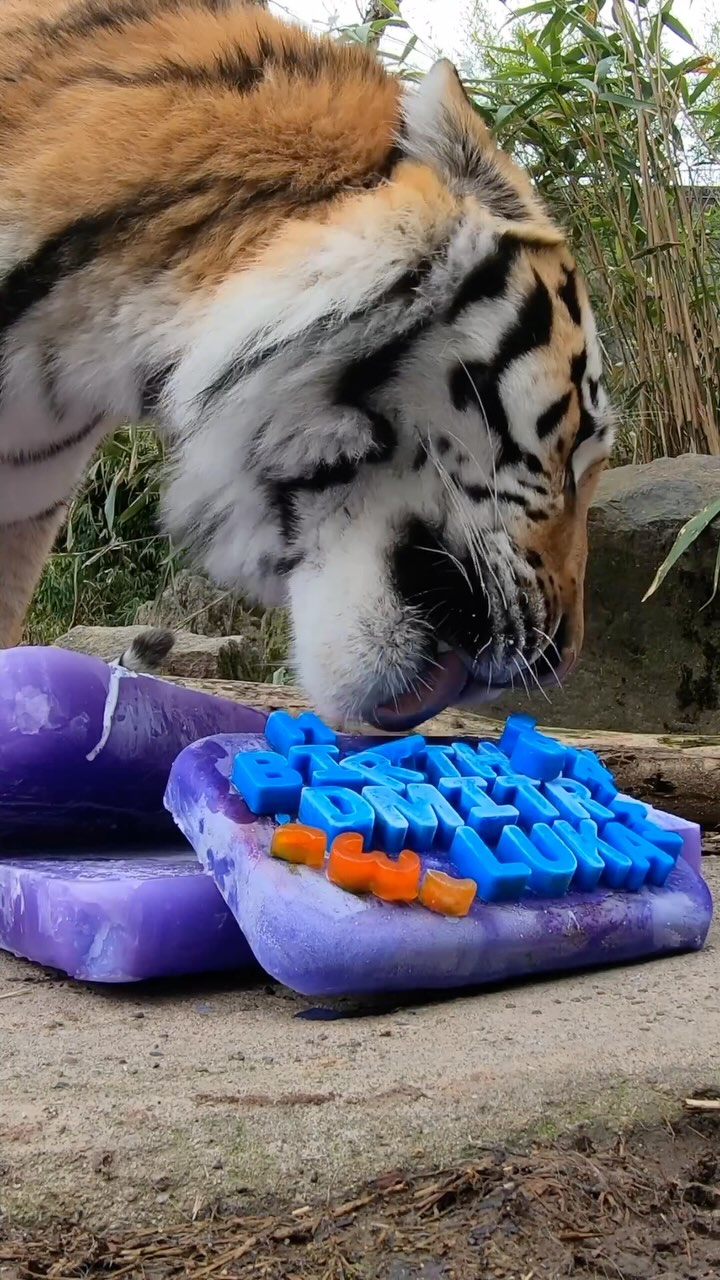- The significance of celebrating birthdays for zoo animals and how it contributes to animal welfare and enrichment.
- An introduction to Amur tigers, emphasizing their conservation status and the importance of captive breeding programs.
- The role of zoos in wildlife conservation and education, with a focus on the ethical considerations of keeping large predators like tigers.
- The specific dietary needs of Amur tigers and the innovative ways zoos meet these needs through activities like birthday celebrations.
- The impact of human activity on Amur tigers and global conservation efforts aimed at their preservation.
Celebrating birthdays for zoo animals is more than just a spectacle for curious visitors. It serves as a tool for enrichment, animal welfare, and educational outreach. The recent “Happy purrthday Luka and Dmitri!” event at a zoo, marking the third birthday of the Amur tiger brothers with a cake made of frozen goat milk, exemplifies this concept. Such events are not only vital for keeping the animals physically and mentally stimulated but also raise public awareness about the amazing creatures in captivity and the ones struggling to survive in their natural habitats.
Amur tigers, also known as Siberian tigers, are a subspecies of the tiger native to the far eastern regions of Russia and parts of China. These majestic cats are the largest of the tiger subspecies, known for their striking orange coats with black stripes and powerful builds. Unfortunately, Amur tigers are classified as endangered. Their population has dwindled due to extensive poaching and habitat loss. Conservation programs, including those run by zoos, play an essential role in ensuring the survival of this species. The birthday celebration for Luka and Dmitri sheds light on the critical work that zoos undertake as part of global efforts to conserve endangered species.
Zoos have transformed significantly over the years. These institutions now prioritize wildlife conservation and education as much as entertainment. When it comes to species like the Amur tiger, zoos become a vital refuge for both preserving genetic diversity and educating the public. For tigers, captive breeding programs contribute immensely to maintaining stable populations that can potentially be reintroduced into the wild. Such efforts are essential when natural populations face continuous threats. However, ethical concerns about keeping large predators in captivity persist. Zoos must ensure that their enclosures mimic natural habitats and that animals like Luka and Dmitri receive appropriate care and engagement to support their physical and mental health.
Feeding wild carnivores like Amur tigers in captivity poses unique challenges. These animals are not only large and powerful, but they also have specific dietary requirements to thrive. Zoos must closely simulate the tigers’ natural diet to maintain health and vitality. For Amur tigers, this typically includes large quantities of meat, but special occasions like birthday celebrations allow for creative additions such as frozen goat milk cakes. Such treats offer enrichment, encouraging natural hunting behaviors and providing mental stimulation.
Human activity remains the greatest threat to Amur tigers in the wild. The ongoing deforestation, poaching, and human encroachment into their habitats have limited their natural range. In response, global conservation initiatives focus on habitat preservation, anti-poaching efforts, and strengthening legal protections. These collaborative efforts between governments, non-profits, and zoos are critical in securing a future for Amur tigers. Celebrations like the one for Luka and Dmitri engage the public, fostering a sense of responsibility and urgency to support conservation actions.
Through these educational birthday events, zoos underline the importance of individual animals within larger conservation narratives. Luka and Dmitri’s story is not only about the joy of celebrating their birthdays but also about highlighting the ongoing struggle faced by their wild counterparts. Their frozen goat milk cake becomes a conversation starter, prompting discussions about environmental stewardship, species preservation, and the role humans must play in protecting our planet’s biodiversity. With every “Happy purrthday,” zoos like the one hosting Luka and Dmitri aim to inspire a future where Amur tigers are celebrated not just in captivity, but as thriving members of their natural ecosystems.
*****
Source Description
Happy purrthday Luka and Dmitri! The Amur tiger brothers celebrated turning 3 with a cake made of frozen goat milk.


